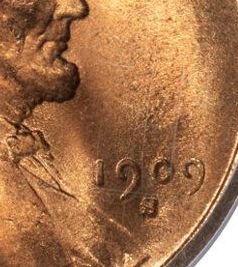Ad
The Role of Mint Marks: Decoding U.S. Coinage
Understanding Mint Marks and Their Impact on Coin Collecting and Value

When it comes to U.S. coin collecting, few details are as fascinating and significant as mint marks. These tiny letters on coins hold the key to their origin, history, and sometimes their extraordinary value. Whether you’re a seasoned numismatist or just starting to explore the world of coin collecting, understanding mint marks can greatly enhance your appreciation for the coins in your collection. Let’s dive into the history, purpose, and impact of mint marks on U.S. coinage.
The History and Purpose of Mint Marks
Mint marks first appeared on U.S. coins in the late 18th century as a way to track where coins were made. Established by the Coinage Act of 1792, the U.S. Mint began producing coins in Philadelphia, but as the nation expanded, additional mints were built to meet growing demand.
Mint marks—small letters representing each mint—were introduced to help distinguish coins produced at different locations.
For example:
- "P" for Philadelphia (though this mark was not used on most coins until 1942).
- "D" for Denver.
- "S" for San Francisco.
- "CC" for Carson City (a smaller mint that gained legendary status among collectors).
These marks were crucial not only for tracking production but also for identifying counterfeit coins. During wartime and economic crises, mint mark practices adapted.
For instance, in 1942, Philadelphia produced coins without mint marks to conserve resources. Today, these historical shifts make certain mint-marked coins particularly desirable.
Locations of Mint Marks on Various Coins
Identifying a mint mark can be as exciting as finding treasure. Each coin type has a unique mint mark placement, and knowing where to look is essential:
- Lincoln Pennies: The mint mark is located just below the date on the obverse side.
- Jefferson Nickels: Before 1965, the mint mark appeared on the reverse. Post-1968, it moved to the obverse.
- Quarters and Dimes: Mint marks are usually found near the date on the obverse.
- Morgan Silver Dollars: Look on the reverse, just beneath the wreath or eagle.
Collectors often use magnifying glasses to spot mint marks, especially on worn coins where these small details might be obscured.
How Mint Marks Affect Rarity and Desirability
For coin collectors, rarity is king—and mint marks often determine how rare a coin is. Coins minted in smaller facilities like Carson City (“CC”) or in limited runs at Denver (“D”) or San Francisco (“S”) can be significantly more valuable than their Philadelphia counterparts.
Take, for example, the 1909-S VDB Lincoln Cent. With only 484,000 minted, its “S” mint mark makes it one of the most sought-after pennies in the world. Similarly, the 1879-CC Morgan Dollar carries a premium due to its scarcity and the mystique surrounding the Carson City Mint, which only operated intermittently between 1870 and 1893.
In addition to production numbers, condition matters. Coins with sharp, clear mint marks tend to command higher prices, as they indicate less wear. For collectors, preserving the clarity of a mint mark is critical for maintaining a coin’s value.
Notable Examples of Valuable Mint Mark Variations
Some mint-marked coins have achieved legendary status in the numismatic world. Here are a few highlights:
- 1909-S VDB Lincoln Cent: This penny combines rarity, a strong design, and an “S” mint mark, making it a must-have for any serious collector.
- 1916-D Mercury Dime: The Denver mint produced fewer than 300,000 of these dimes, making them exceedingly rare.
- 1922 "No D" Lincoln Cent: A minting error resulted in some Denver pennies lacking their "D" mint mark, significantly increasing their value.
- 1955 Double Die Lincoln Cent: While not a mint mark variation, its error status often overlaps with discussions of rare coins, demonstrating how small details can have big impacts.
Even modern coins can fetch a premium. For example, recent releases from the West Point Mint (“W” mint mark) have become instant collector favorites, thanks to their limited availability.
Practical Tips for Collectors
Collecting mint-marked coins can be an incredibly rewarding hobby, but it pays to be informed. Here are a few tips:
- Know Your Tools: A good magnifying glass and a reliable coin reference guide are essential for identifying and evaluating mint marks.
- Stay Current: Market trends shift, so keep an eye on auction results and collector forums to track which mint-marked coins are in demand.
- Protect Your Investment: Store coins in proper holders or albums to prevent damage to mint marks. Even minor wear can affect value.
Conclusion
Mint marks may be small, but they play a big role in the world of U.S. coin collecting. From their historical significance to their impact on rarity and value, mint marks offer collectors a deeper connection to the story of each coin. So next time you sort through your collection, take a closer look—you might just find a hidden gem that tells a story of its own.
Happy collecting, and may your search for mint-marked treasures lead you to exciting discoveries!
.
Ad

Ad